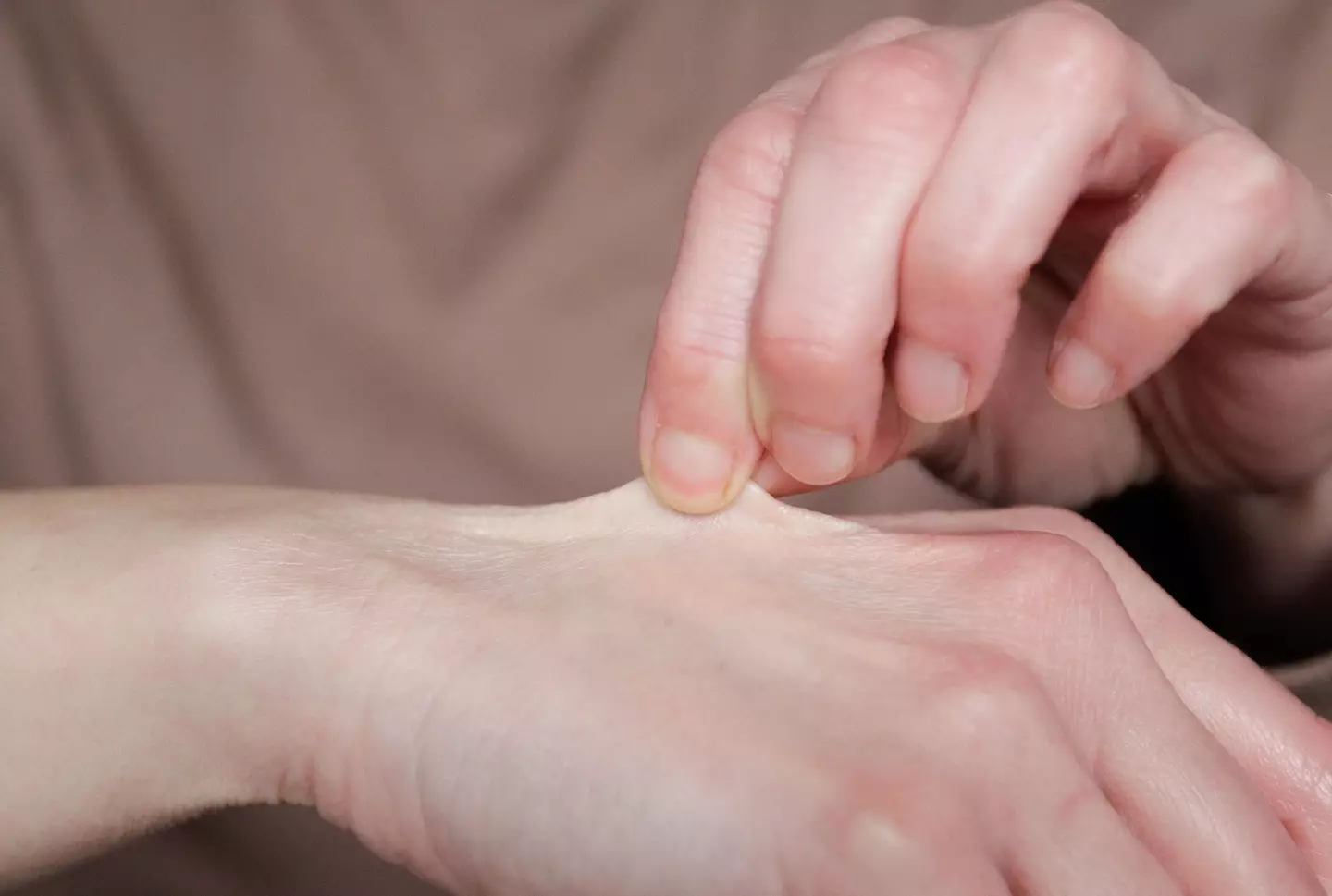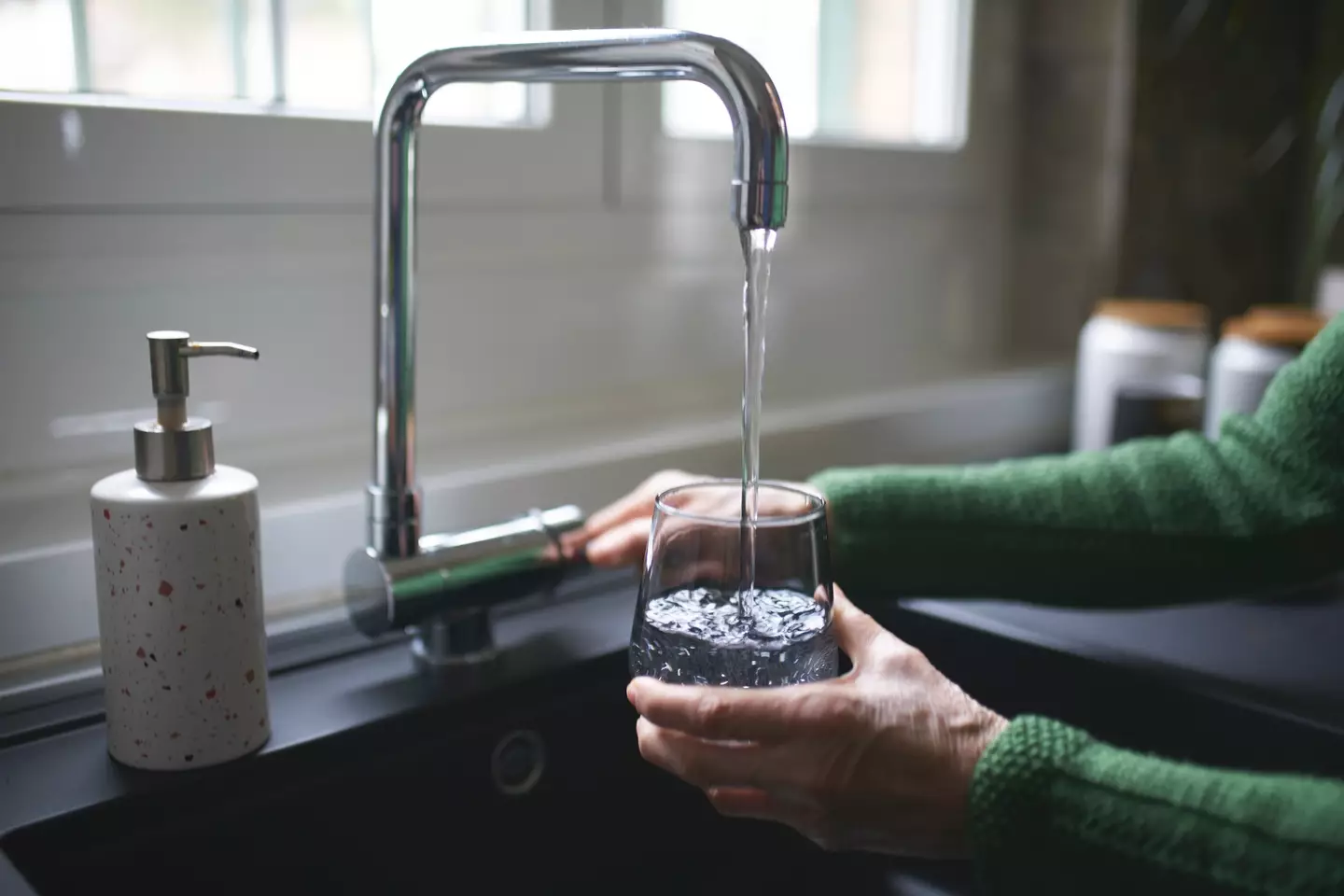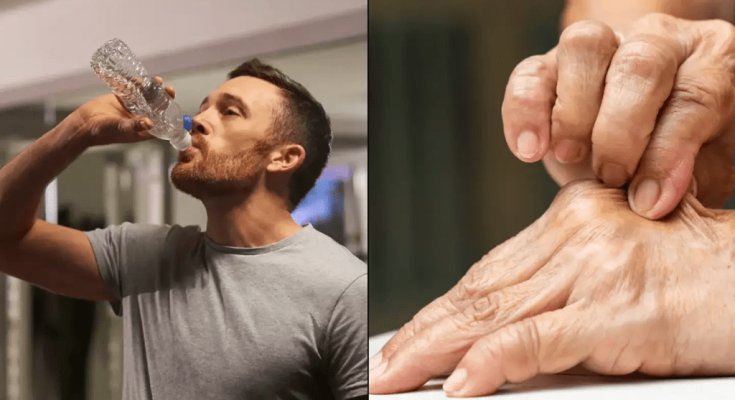We’ve all heard the advice: “Drink six to eight glasses of water a day to stay healthy.” While this is a good guideline, the truth is, it’s not always as simple as just counting glasses. What if you could quickly check if you’re dehydrated with a simple test? Well, it turns out that you can!
Health expert Dr. Myro Figura recently shared a straightforward test on TikTok that anyone can do at home to check their hydration levels in seconds. No more wondering if you’re getting enough fluids. Let’s dive into how this test works and why staying hydrated is so crucial for your health.
The Simple Dehydration Test: The Turgor Pinch
If you’ve ever been in a hospital, you may have seen medical professionals check for dehydration by pinching the skin. This is known as the Turgor Pinch Test. It’s a fast, painless way to assess how hydrated you are. Dr. Figura explains that when you’re dehydrated, your skin loses some of its elasticity. This is due to the loss of fluid in the body, making the skin less flexible.
To carry out the test, you can pinch the skin on the back of your hand (not your finger, as Dr. Figura points out in his TikTok video). Once you pinch the skin, let go. If the skin immediately snaps back into place, you’re likely well-hydrated. However, if the skin stays pinched for a while, it’s a sign that your skin’s elasticity has been reduced due to dehydration.
Why Does Skin Elasticity Matter?
Your skin’s elasticity is closely tied to the amount of fluid in your body. The more hydrated you are, the better your skin will bounce back when pinched. On the other hand, when you’re dehydrated, your body loses water and that affects the extracellular space in your cells, reducing skin elasticity. So, if you’re noticing that your skin doesn’t bounce back as it should, it’s a clear signal that you need to drink more fluids.
How to Perform the Test Correctly
Dr. Figura stresses that the test must be done on the back of your hand, not your finger. This is because the skin on your fingers can behave differently compared to the skin on the back of your hand, which is better suited for this test.
To perform the Turgor Pinch Test correctly:
- Pinch the Skin on the Back of Your Hand: Gently grab a small fold of skin.
- Release the Skin: Let go of the pinch and observe how quickly the skin returns to its normal position.
- Interpret the Results:
- If the skin returns immediately, you’re likely hydrated.
- If the skin remains pinched or takes longer to return to its normal position, it’s a sign of dehydration.
Other Signs of Dehydration
While the Turgor Pinch Test is a great way to check your hydration, there are other signs that can indicate you’re dehydrated. Here are some common symptoms to look out for:

- Feeling Thirsty: This is your body’s way of signaling that it needs more fluids.
- Dark Yellow Urine: Your urine should be pale yellow. Dark yellow urine is often a sign of dehydration.
- Frequent Urination: A decrease in how often you pee, or a reduced urine output, can be a sign of dehydration.
- Dizziness or Lightheadedness: Dehydration can affect your balance and cause you to feel dizzy.
- Tiredness: Dehydration can make you feel fatigued and low on energy.
- Dry Mouth, Lips, and Tongue: A dry mouth and cracked lips are a common sign of dehydration.
- Sunken Eyes: This can be a more extreme sign of dehydration, often seen in severe cases.
How to Stay Hydrated: Tips for Maintaining Fluid Balance
Now that you know how to check if you’re hydrated, let’s talk about how to keep your hydration levels in check. Staying properly hydrated is important for overall health, and it doesn’t just come from drinking plain water.
The NHS recommends that you drink six to eight glasses of fluids a day (about 1.2 liters), but that doesn’t mean all of those fluids have to come from water. Other drinks like low-fat milk, sugar-free tea and coffee, and even soups can help keep you hydrated throughout the day.
Here are some tips to stay hydrated:

- Drink water regularly: Don’t wait until you’re thirsty. Try to sip water throughout the day, even if you don’t feel thirsty.
- Eat hydrating foods: Foods like cucumbers, watermelon, and oranges have a high water content and can contribute to your daily hydration.
- Adjust for exercise or heat: If you’re exercising or spending time in hot environments, you may need to drink more fluids to replace the water lost through sweat.
- Monitor your urine: Aim for light yellow urine, which indicates good hydration.
The Risks of Chronic Dehydration
Chronic dehydration can lead to serious health issues, so it’s important to pay attention to your hydration levels. Long-term dehydration can lead to problems like:
- Kidney stones: Not drinking enough water can cause minerals in your urine to crystallize, forming kidney stones.
- Urinary tract infections (UTIs): Dehydration can make it harder for your body to flush out bacteria, leading to UTIs.
- Kidney failure: Severe and prolonged dehydration can damage your kidneys, potentially leading to kidney failure.
Therefore, it’s essential to stay hydrated and address dehydration before it becomes a long-term issue.
When to See a Doctor

If you notice that you’re frequently dehydrated despite drinking plenty of fluids, it’s important to consult a healthcare professional. Some people struggle with dehydration due to medical conditions, medications, or illness. For example, if you’re vomiting, experiencing diarrhea, or running a fever, you may need to drink more fluids to compensate for the loss.
If dehydration is affecting your ability to retain fluids, it’s a good idea to speak with a pharmacist or a healthcare provider for advice.
Conclusion: Stay Hydrated, Stay Healthy
Hydration is a key part of maintaining your overall health, and the Turgor Pinch Test is an easy way to check if you’re on track. By pinching the skin on your hand and observing how quickly it returns to its normal position, you can quickly assess your hydration levels.
However, don’t forget to keep an eye on other signs of dehydration, such as dark urine, tiredness, or a dry mouth. Remember, staying hydrated isn’t just about drinking water—it’s also about making healthy choices in your diet and lifestyle.
So, next time you’re feeling thirsty or wondering if you’re hydrated, give the Turgor Pinch Test a try! And remember, it’s always better to drink a little more than too little, especially when it comes to keeping your body happy and healthy.



